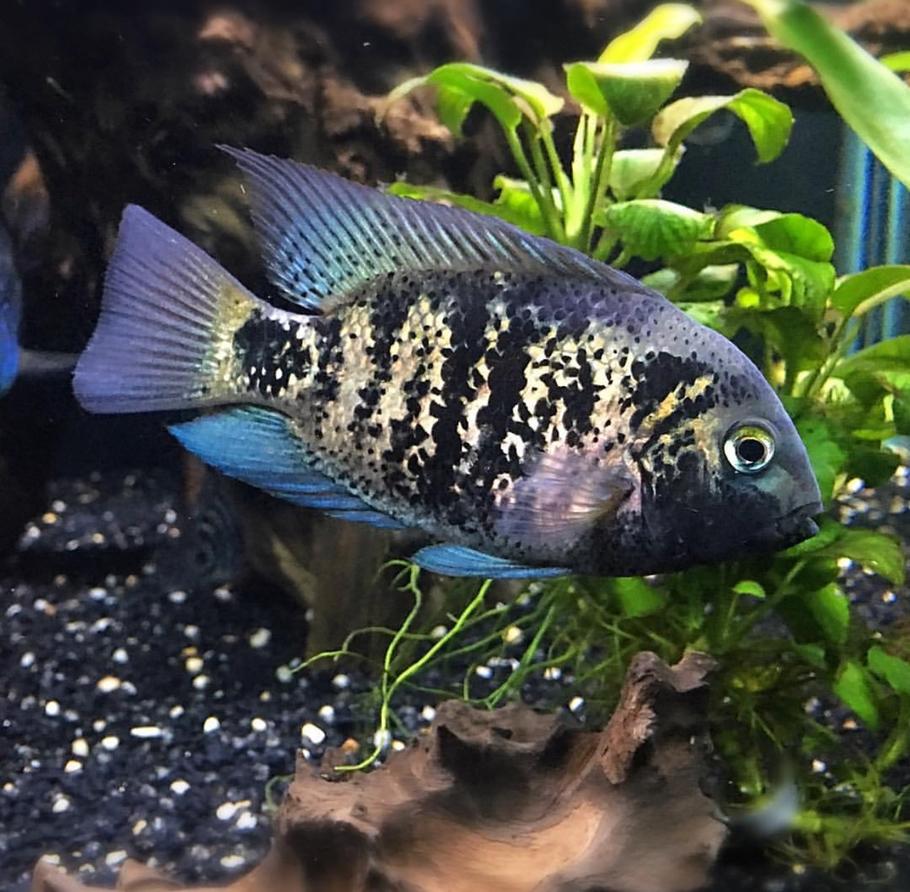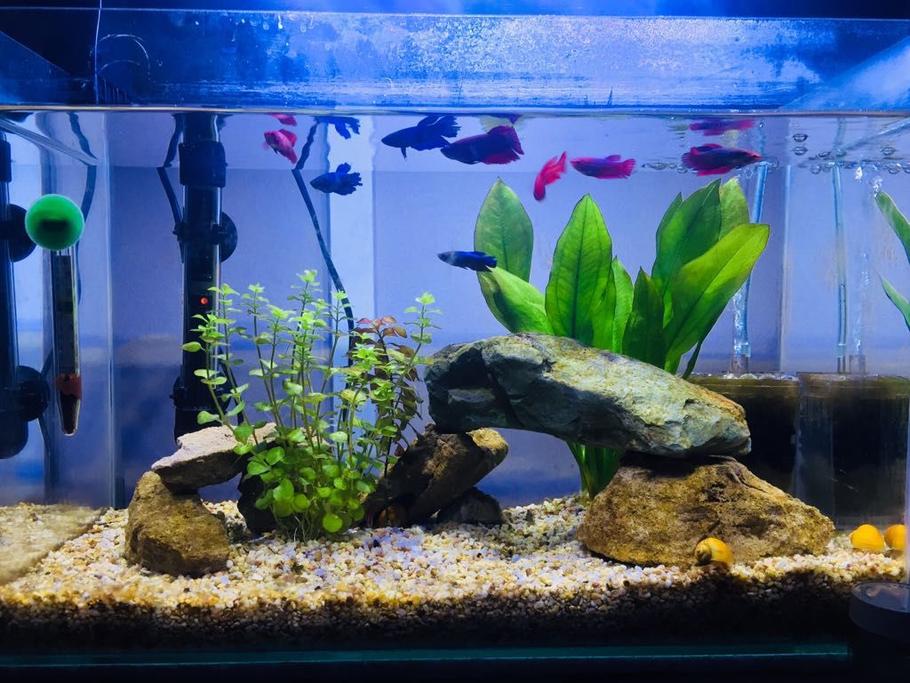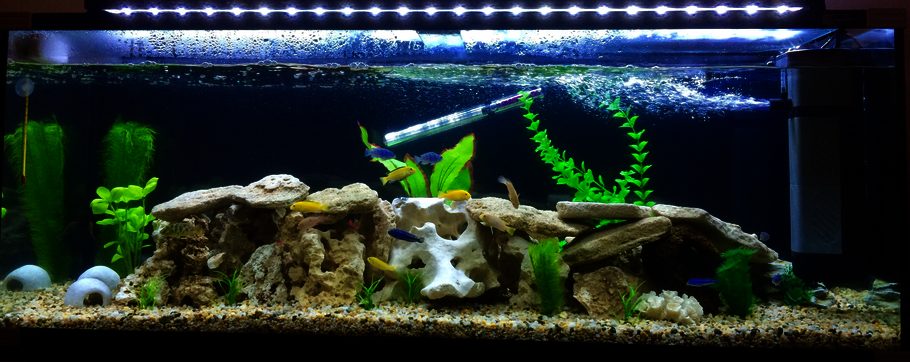HOW HAS TECHNOLOGY CHANGED THE AQUARIUM HOBBY?

Updated
Advances in modern technology have changed the world we live in, but how has it affected the aquarium hobby? Keep reading to find out.
Innovation is the heart of progress – things cannot move forward if they don’t change. There are a great many ways this principle can be applied. You may not think of it as relevant to the aquarium hobby but, if you take a moment to consider it, you’ll come to see just how much progress has been made in the aquarium industry and what kind of promise the future holds.
Modern technology has changed the way we live. Not only has it made our lives easier, but it has made them safer as well. It is easy to identify the benefits of modern technology for things like transportation and medicine, but there are many smaller applications as well. The aquarium hobby is an excellent example of how technology has been a catalyst for change.
In this article, we’ll talk through some of the technological advances that have impacted the aquarium hobby. We’ll also talk about changes to the hobby as a whole and provide some insight into what the future may hold. So, keep reading!
Turning Back the Clock – What’s Changed?
While most pet stores carry a limited supply of glass or acrylic aquariums in a small range of sizes, the availability of prefabricated fish tanks has changed a great deal over the decades. New manufacturing techniques and improved materials have made it possible for fish tanks to exceed 100 gallons in capacity. Not only are modern aquariums larger, but they are stronger as well and less prone to scratches, cracks, and breakage.
Moving into the realm of aquarium equipment, a great deal has changed. Aquarium filters have existed for many years and they serve to keep the home aquarium free from contaminants. One of the biggest advances in aquarium filtration is the change from simply offering mechanical filtration to the creation of filter media that promotes chemical or biological filtration. Wet/dry technology and bio wheels have made it possible to cultivate and maintain a large colony of beneficial bacteria that serve to keep water chemistry much more stable in the home tank. Improvements in maintenance of aquarium filtration have also been made over the years.
90 gallons saltwater fish tank (mostly fish, little/no live coral)

State: Iowa
Country: United States
MORE INFO
Photo Caption:
My personal ocean
Fish Kept:
Humu Picasso Triggerfish, Blue Tang, Ocellaris Clownfish
Tank Size:
90 gallons

Another area in which many changes have occurred is in aquarium lighting. We’ll talk a little bit more about the energy efficiency of tank lighting in the next section, but for now we’ll mention some technological improvements. While fluorescent tube lights are still popular for basic tank lighting, many more options exist now than before in terms of high-output and full-spectrum lighting. The advent of electronic ballasts is what made it possible for high-wattage lighting systems to last longer and to produce less heat.
New developments have also led to a variety of different spectrums and intensities in tank lighting. You can now choose from a wide variety of different types of tank lighting as well as different wattages, intensities, and spectrums to closely replicate natural, real-world conditions for your tank inhabitants. Lunar LEDs, for example, opened up an entirely new realm of tank lighting providing gentle illumination in the right spectrum for nocturnal tank inhabitants.
Finally, new technology has made the task of cleaning and maintaining the home aquarium much faster and much simpler. For example, siphon hoses and gravel vacuums can now be attached directly to a sink setup to drain or fill a tank. Sump systems can be customized with all kinds of maintenance equipment such as protein skimmers, UV sterilizers, and automatic top-off systems. Best of all, modern technology equipment can be stored outside of the tank in an under-tank sump system or aquarium cabinet to streamline the aesthetics of your tank.
Though the primary focus of this article is aquarium technology, it is important to mention some other innovations and advancements that have changed.

Food products for aquarium fish, for example, have improved to provide high-quality and balanced nutrition to a wide variety of species. Saltwater fish are notoriously picky eaters (especially wild-caught specimens) but improvements in fish food have made it possible to keep species that were once extremely difficult to care for. Advancements have also been made to reduce the risk for contamination from certain live foods like bloodworms and tubifex worms.
In addition to food products, there are a number of liquid vitamins and water conditioning-treatments that have been developed to improve captive live for aquarium fish and to make the hobbyist’s job easier. Keep reading to learn about current technology trends in the aquarium hobby.
Current Technology Trends in the Aquarium Hobby
Innovations and advances in technology have made their way into the aquarium hobby very quickly and, it often seems, seamlessly. Improvements to equipment and maintenance systems not only improve the hobby for people who enjoy it, but it makes the hobby more appealing to those on the outside as well. Technology has made it possible for hobbyists to explore new realms while also making the hobby itself more efficient.
Trends come and go – the aquarium hobby is no different. Let’s take a look at some of the current technology trends in the aquarium hobby.
1. Energy Efficiency
The amount of energy an aquarium consumes depends on several factors but mainly the size of the tank and the type of equipment. A small 10-gallon tank might only consume about 150kWh per year which, at an average of 12 cents per kWh adds up to under $20 per year. If you increase the size of the tank and factor in electricity-guzzling equipment like high-output lighting and sump systems, however, that cost might skyrocket.
Aquarium lighting is the largest consumer of energy when it comes to tank equipment, accounting for roughly 45% of total tank usage. If you are maintaining tropical temperatures in your tank, you also have to have a tank heater and any tank requires a filter. Heating and filtration need to be on 24 hours a day, for most tanks, while lighting can be turned on and off. Keep in mind, however, that some tanks require more or more intense lighting than others. For example, a fish-only tank might do just fine with a single fluorescent bulb for daytime illumination while a planted tank may require high-output lighting.
The biggest advance in aquarium lighting technology is LED lighting. A standard fluorescent bulb is usually in the 15 to 40-watt range while VHO lighting ranges from 75 to 160 watts. Metal halides may go as high as 1,000 watts and you then have to think about the added cost of running an auxiliary fan or chiller. In contrast, LED lights consume up to 80% less electricity and they don’t generate heat. Plus, they come in a variety of colors so you can set up daylight and moonlight systems.
2. Compact Equipment
It is common knowledge within the aquarium hobby that maintaining stable tank parameters is easier in a large tank than a small tank. It stands to reason that slight changes in pH or chemistry will have a greater impact on a tank with a 10-gallon volume than on a tank with a 100-gallon volume. Thanks to new technology, however, the gap is closing and compact equipment and aquarium systems are becoming more readily available and easier to use.
The “nano tank” trend has been sweeping the aquarium industry lately. Nano aquariums are small, compact aquatic environments that must be maintained with great attention to detail because even the smallest change could be devastating. Many nano tanks incorporate essential equipment like lighting and filtration into the hood, but additional equipment may be needed as well. Compact aquarium equipment is not just beneficial for nano tanks, however – it is also a great improvement for tanks where you do not want your equipment cluttering up the aesthetics.

3. Automation and “Smart” Devices
At one time, the most you could do to automate aquarium functions was to hook your tank lighting up to a timer. Automatic timers made it possible to regulate the on/off cycle for tank lighting and they could also be rigged to work with automatic feeders. Today, automation technology has taken things to an entirely new level – it is almost to the point where aquariums can be self-sufficient.
There are a number of new technologies and aquarium controllers that make it easier to automate or control multiple pieces of aquarium equipment with a single device. Here are some examples of aquarium controllers:
- Temperature Controller/Thermostat – These devices consist of a probe that can be inserted into the tank. The probe is hooked up to a thermometer and thermostat which you can set to a specific temperature or temperature range – when the tank temperature moves outside of that range, the device automatically kicks on or off.
- Automatic Top Off – Reef aquariums and other tank setups often have trouble with water evaporation. Not only does evaporation reduce the water level in your tank, but it can cause problems with water chemistry as the water volume decreases. Automatic top off (ATO) systems detect both low and high water levels, pumping water into or out of the tank as needed.
- PH Controller – Maintaining a stable pH is important in both freshwater and saltwater tank setups and a pH controller can help. You can set the desired pH range for your tank and hook it up to a carbon dioxide system. When the probe detects an increase in pH outside the desired range, the carbon dioxide system kicks on to lower the pH.
- Oxygen Monitor – This device monitors dissolved oxygen levels in an aquarium through the use of an in-tank probe and a small programmable device. Maintaining the right oxygen/carbon-dioxide balance in an aquarium is very important, so having a device that monitors this balance makes the job much easier.
- Aquarium Monitor – In addition to single-purpose systems like pH controllers, there are also aquarium monitors now available which can keep an eye on several aspects of water chemistry such as temperature, pH, and ammonia levels. Many of these devices log data on a PC, though some newer models make it possible to access this data remotely.
4. One-Touch Maintenance
Some of the most technologically advanced aquarium equipment systems are all but automatic. With smartphone apps and computer programs syncing with your aquarium equipment, it is possible to keep an eye on tank conditions remotely and to detect changes or growing problems in the early stages. In the future, it may be possible to create a one-touch maintenance system where your tank equipment is all linked together and controlled via smartphone or tablet. You could check your tank parameters with the touch of a button, make adjustments to equipment settings, or even automatically dose your tank with chemicals or medications to make necessary changes.

5. Aquaponics Systems
Though technically different from keeping an aquarium, aquaponics involves keeping fish and using the nutrients from the water to fertilize growing plants. As the fish eat and produce waste, the nitrogen-rich water from the tank can be pumped into the growing beds for various plants and vegetables. Thanks to the nutrient-rich water, the plants grow quickly and, depending on the type of fish you keep, you can use some of the plants to feed the fish. It is a self-perpetuating system that still requires monitoring and maintenance, but technological advances has made it easier to do than ever.
Technological Developments in Public Zoos and Aquariums
The underwater world holds a great deal of fascination for children and adults alike, hence the popularity of public zoos and aquariums. The term “aquarium” was coined by an English naturalist named Philip Henry Gosse, though the actual aquarium principle was developed by Robert Warington in 1850. The aquarium craze quickly took hold in Victorian England, leading up to the creation of the first public aquarium at the London Zoo which opened in 1853.
Keeping aquatic animals as pets is by no means nothing new, but public zoos and aquariums take things to a whole new level. Fish are kept in tanks that hold hundreds, even thousands of gallons of water and even large aquatic animals like dolphins, sharks, and whales can now be kept in captivity. There is a great deal of controversy surrounding the keeping of wild animals (aquatic or land-dwelling) in captivity but there is also a great deal of conservation happening at the same time.
Advanced in modern technology have not only changed the way hobbyists design and maintain their aquariums, but it has opened up an entirely new realm of discovery in public zoos and aquariums in the 21st century. The perfect example of this is the Ocean Odyssey exhibit created by National Geographic in Times Square. It is an immersive adventure that takes visitors across the world’s oceans from the coast of California all the way to the South Pacific.
The exhibit is interactive and completely simulated, designed to give visitors the ability to get up-close and personal with a wide variety of sea creatures they might never otherwise get to experience. The exhibit provides these experiences without the need for conditioning millions of gallons of water, spending a fortune on energy costs, or keeping wild animals in captivity. It is all virtual. Not only that, but 27% of the proceeds benefit the National Geographic Society for ocean exploration, research, and conservation.

What Does the Future Hold for the Aquarium Hobby?
In considering the future of the aquarium hobby, we need to think about the impact of keeping aquarium fish. Maintaining a small ten-gallon tank stocked with a handful of guppies may not seem like a big deal, but there are a number of factors to consider. First and foremost, an aquarium is one of the only appliances in a home that is left on constantly. A large aquarium around 55 gallons would consume roughly 200 to 400kWh over the course of a year. For comparison, your fridge consumes about 1,000kWh per year.
New technology such as LED lighting and home automation systems have greatly reduced energy consumption by aquarium setups, it is still worth thinking about the long-term implications of the aquarium setup you choose. For example, maintaining a delicate reef environment is going to require more maintenance and more equipment than a basic freshwater setup or even a cold-water tank that doesn’t need to be heated.
You also have to think about your tank inhabitants and the sustainability issues that come into play. Over the past several decades, we have made huge leaps and bounds in captive breeding for many species but there are still issues with fish being captured from the wild and sold in the aquarium hobby and with coral reefs being destroyed. Another problem is that people who get tired of their pets sometimes release them into the wild – this is the root cause of the lionfish infestation that has reached epidemic proportions in the Atlantic Ocean.
The fact of the matter is that home aquariums are not going to disappear, and aquatic research will continue to go on. The future may hold changes in areas of sustainability and ethics, but change is inevitable. If you want to do your part for the environment, use energy-efficient equipment in your aquarium and make sure to follow sustainability practices as much as possible. Good luck!
comments powered by Disqus











































